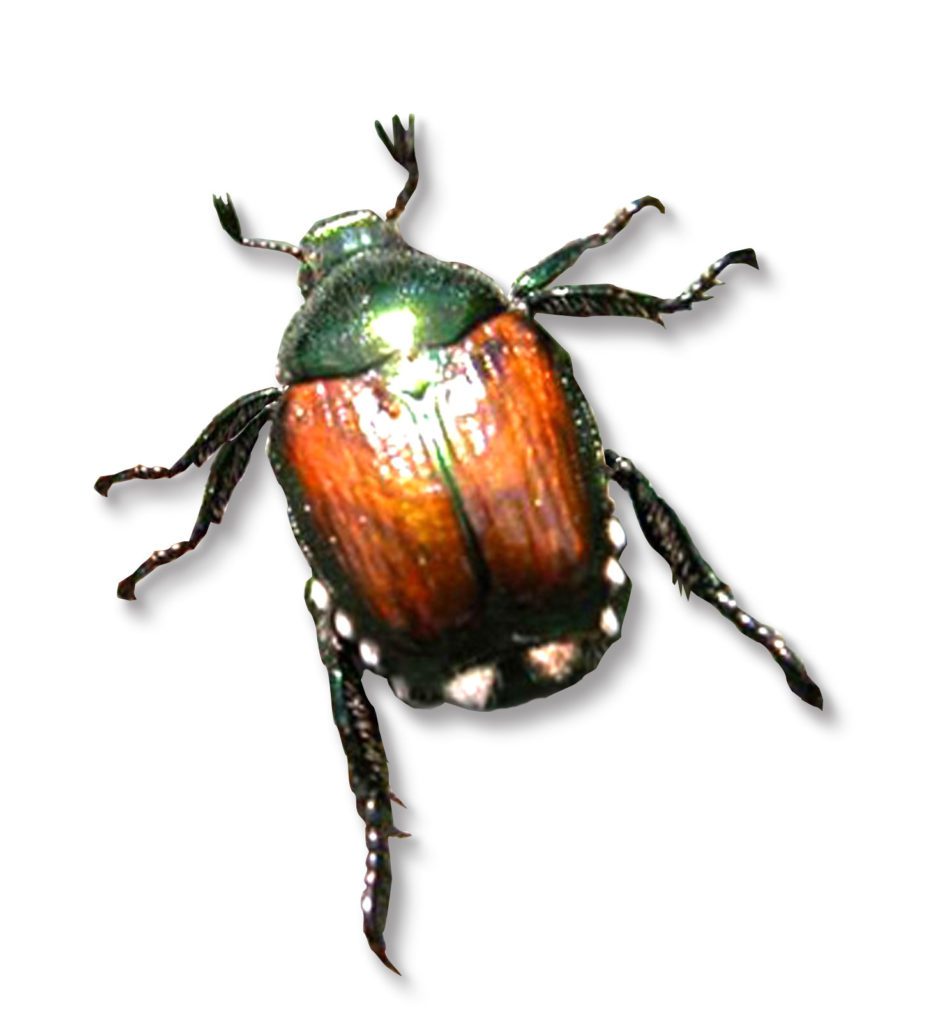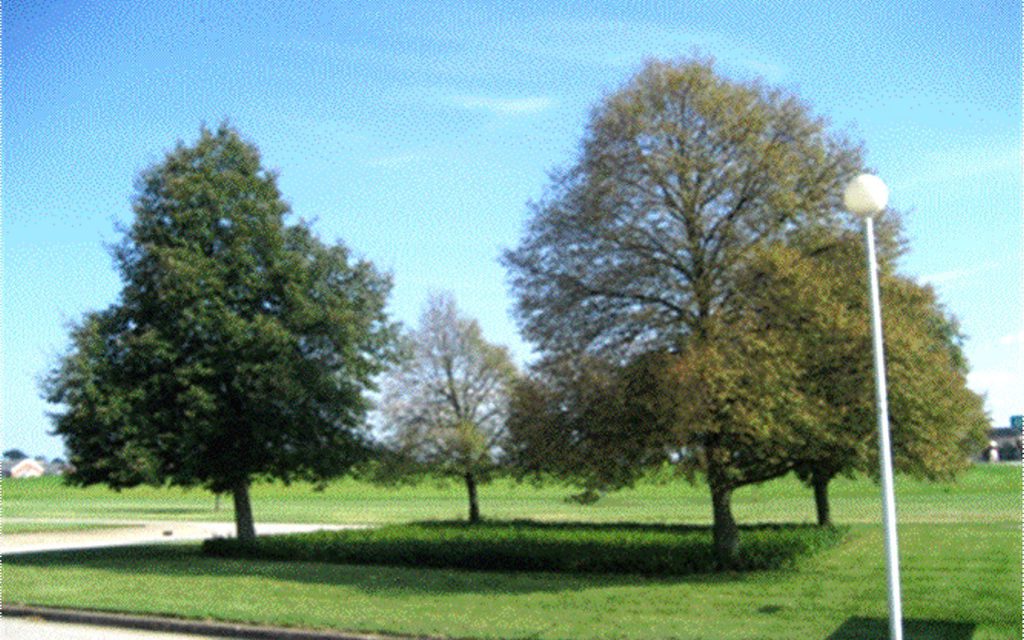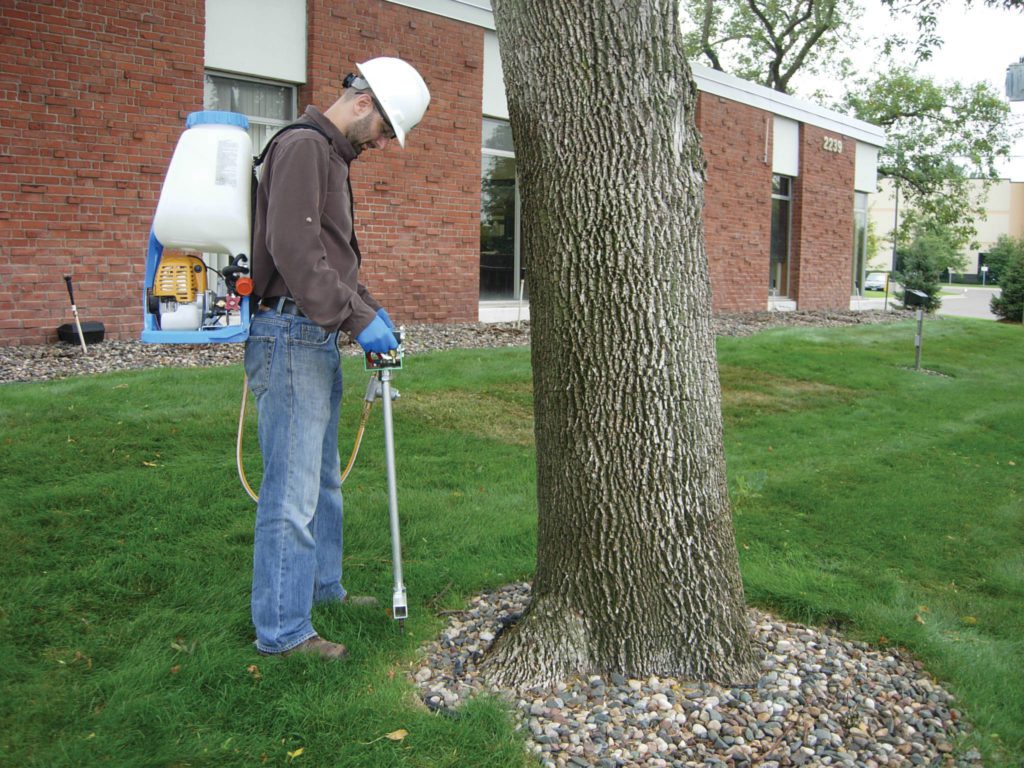
What are Japanese Beetles?
Native to Japan, the Japanese beetle (Popilia japonica) has spread to many U.S. states including Iowa, Missouri and Minnesota, and continues to spread each year. Grubs are commonly distributed in shipped nursery stock soil. Adults are very mobile and can hitch a ride on cars and airplanes.
The adult beetles are skeletonizers, which means they feed on the leaves of trees by eating the tissue between the leaf veins. Severe Japanese beetle infestations can completely devour all of the tree’s leaf tissue, leaving only the veins behind. They will often feed on flowers and fruit as well.
Japanese beetles have a distinctive look with metallic green shoulders and a very shiny bronze colored back. All Japanese beetles have a row of five white hair tufts projecting from under each wing cover and two more at the rear tip of the abdomen.
What Trees do They Feed On?
Japanese beetles will feed on a number of common shade trees and ornamental plants including: linden, crape myrtle, flowering crabapple, Norway maple, Japanese maple, flowering cherry, elm, sycamore, black walnut, horse chestnut, plum, gray birch, and others.

How Do I Know if My Tree has Japanese Beetles?
The most common symptom of a Japanese beetle infestation is defoliation of the canopy, coupled with seeing the actual beetles, often in large numbers. The beetles are attracted to trees that are already infested, resulting in high populations on a single tree. Individual leaves on infested trees will be missing leaf tissue between the leaf veins causing a lace-like, skeleton appearance. After being “skeletonized”, the leaves soon wilt and die, leaving severely attacked trees to appear from a distance as if they have been scorched by fire.
Treatment

Adult Japanese beetles begin feeding in early July. Feeding adults attract more beetles to attack in large numbers making this pest challenging to control when severe infestations occur. Soil applications of Xytect, Lepitect, or Safari will provide acceptable levels of stand- alone control.
Products: Lepitect (soil injection), Xytect (soil injection/basal drench), Transtect (soil injection/basal drench), Lepitect Infusible (tree injection)
Treatments should be applied at the following times:
- Apply Xytect soil applications in late fall or early spring.
- Lepitect and Transtect should be applied in early June 3-4 weeks prior to adult emergence in early July.
- Tree injections should be made when adult beetles begin to damage plants.
Contact us to schedule a consultation with a certified arborist.


